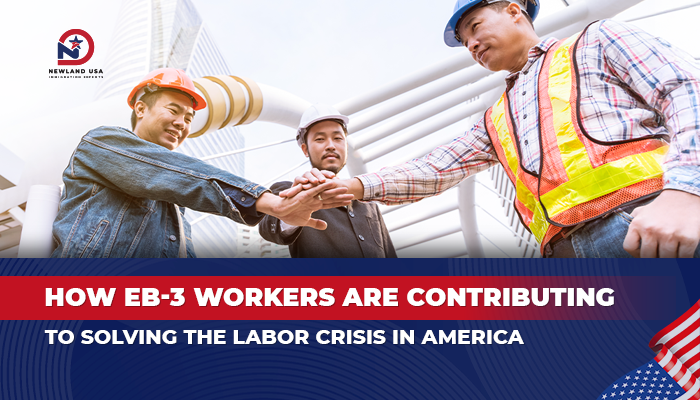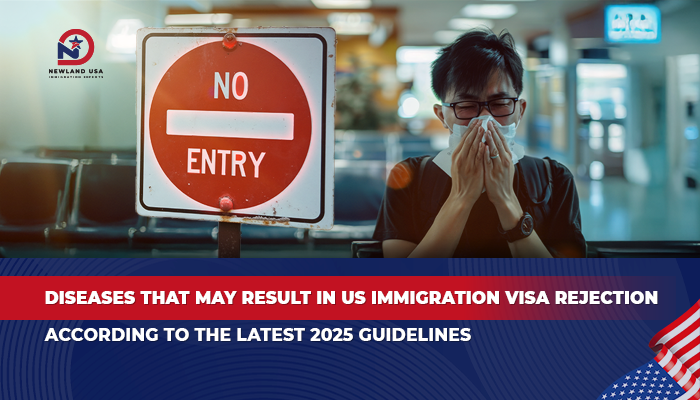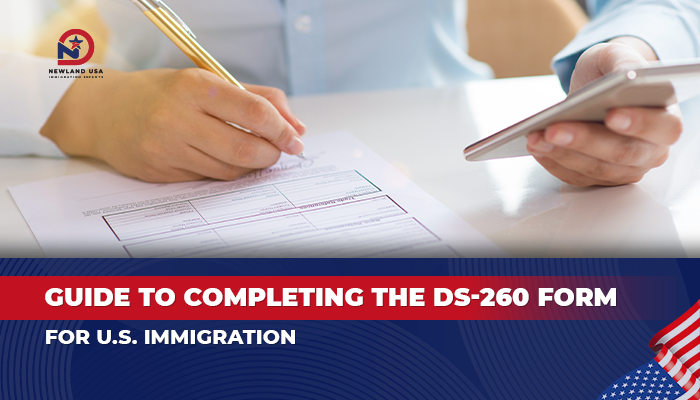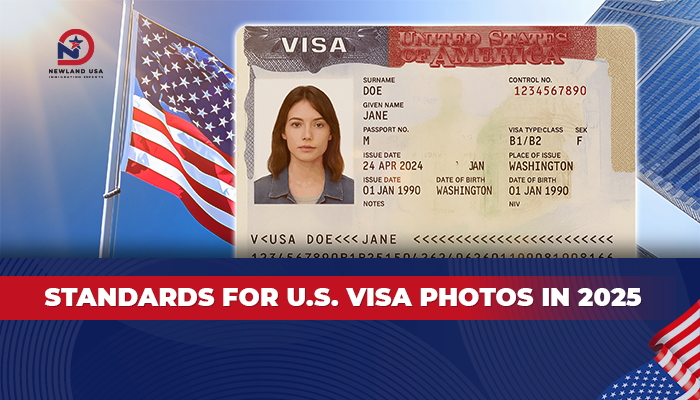How EB3 Workers Are Contributing to Solving the Labor Crisis in America

The U.S. labor market is facing a severe workforce shortage, especially in industries requiring skilled and unskilled labor. In this context, EB3 workers are becoming a strategic solution helping American businesses overcome difficulties. This article from Newland USA will analyze how the EB3 program is helping fill the personnel gap and bringing long-term benefits to both workers and employers.
1. The Current State of the U.S. Labor Market
According to data from the U.S. Bureau of Labor Statistics (BLS), the labor force participation rate in the U.S. in December 2024 reached only 62.5%, maintaining this level for three consecutive months. This figure shows a worrying downward trend from the peak of 67.3% in the early 2000s.
The reality of labor shortage is clearly reflected in the July 2025 data with 7.4 million job openings still vacant, while only 5.6 million new hires and 5.3 million separations were recorded. This means there are nearly two jobs open for each potential candidate. The situation becomes more serious when most candidates lack the ability or motivation to work in unskilled labor positions.
The American Staffing Association (ASA) reports an alarming figure: the turnover rate in some positions in the light industrial sector has exceeded 400% per year. This situation not only affects productivity but also increases operating costs and puts pressure on HR departments.
2. EB3 Visa: A Solution for Labor Needs
EB3 Visa is a legal immigration pathway designed for foreign workers who want to settle in the U.S. through employment. According to the Immigration and Nationality Act (INA), up to 40,040 EB3 Visas are allocated annually to three groups: skilled workers, unskilled workers, and professionals.
In particular, the unskilled EB3 workers group includes jobs requiring less than two years of experience or professional training. These are exactly the positions where American businesses are having the most difficulty finding domestic candidates, such as food processing workers, warehouse employees, hotel and restaurant staff, and elderly care workers.
The core difference of the EB3 program compared to other temporary visa types lies in its permanent resident nature. Workers are granted a green card from the start, not working on a temporary basis. This creates a long-term commitment between workers and employers, while providing stability for both parties.

3. Benefits of EB3 Workers for American Businesses
3.1. Reducing Turnover Rates
One of the biggest problems businesses face is employees “ghosting” or suddenly quitting. EB3 workers help solve this problem fundamentally because they must commit to full-time work, not seasonal in nature, and for a minimum of one year with the sponsoring employer.
Having gone through strict background checks, health screenings, and security clearances before entering the U.S., participants in the EB3 program typically have a high sense of responsibility and desire to commit long-term to building a new life in America.
3.2. Reasonable Costs and Clear Timeline
Contrary to popular belief, the cost for employers to conduct EB3 recruitment is not high. The total cost that businesses must bear includes legal fees and recruitment advertising costs. Most government filing fees and health examination costs will be paid by the workers themselves.
Moreover, because EB3 workers commit to working for at least 12 months, businesses can plan long-term human resources and incorporate them into financial forecasts accurately. This helps avoid the irregular surplus or shortage of personnel commonly seen in traditional recruitment models.
3.3. Improving Productivity and Corporate Culture
Workers participating in the EB3 Visa program typically have high work motivation because they have invested significant time and effort in their American dream. They value the opportunity to work and tend to actively integrate into the corporate culture.
Many employers note that the work spirit of the entire team improves when there is a stable workforce. Recruiters no longer have to face pressure about vacant positions, but can instead focus on building sustainable relationships and ensuring training quality.
4. EB3 Recruitment Process: Clear and Transparent
The EB3 program has a clear process, strictly managed by federal law. First, employers must obtain a PWD (Prevailing Wage Determination) from the U.S. Department of Labor to ensure EB3 workers are paid fairly according to market standards.
Next, the job position must be widely advertised for 30 days to test the domestic labor market. Only when there are no qualified American candidates can the employer file for Labor Certification (PERM).
After PERM is approved, workers can file for EB3 Visa at the U.S. consulate or adjust their status if already legally present in the U.S. The entire process usually takes several years depending on nationality and government agency processing speed.

5. Positive Impact on the Economy
The application of EB3 workers not only solves the labor shortage problem but also brings positive effects to the economy. Businesses reduce continuous recruitment costs, reduce dependence on expensive overtime, and can focus on business development.
The Manufacturing Institute and Deloitte surveyed over 200 manufacturing businesses, with more than 65% saying recruiting and retaining employees is their top challenge. The EB3 program is gradually becoming the solution many businesses choose to overcome this situation.
As of May, total employment in the non-farm sector in the U.S. increased by 139,000 positions with the unemployment rate remaining stable at 4.2%. Industries such as healthcare, entertainment, hospitality, and social services continue to record significant employment growth.
6. Legal Compliance
Conducting EB3 recruitment requires employers to strictly comply with legal regulations. EB3 workers can only be placed in full-time positions that are permanent in nature and not seasonal. Each position must be surveyed in detail and complete all domestic labor market testing steps.
Collaborating with reputable immigration experts is the best way to ensure the process goes smoothly and legally. The U.S. Department of Labor and USCIS regularly inspect EB3 programs, so maintaining complete and accurate records is extremely important.

7. The Future of the EB3 Program
As the labor shortage is expected to continue into 2025 and beyond, the role of EB3 Visa will become increasingly important. Forward-thinking businesses are gradually integrating this workforce into their long-term development strategies.
The Labor Shortage Index shows many states have indexes below 1.0 – meaning there are not enough available workers for open positions. In this context, EB3 workers represent a reliable and stable workforce that American businesses can rely on.
8. Conclusion
EB3 workers are playing an increasingly important role in solving the labor crisis in America. Through the EB3 program, American businesses can access a committed, quality, and long-term workforce. This is not just a temporary solution but a sustainable strategy helping businesses thrive in a fiercely competitive environment.
Newland USA, with an experienced team of experts and the motto “Stable settlement – Lifelong prosperity,” is ready to advise and support in preparing documents and accompanying clients throughout the EB3 immigration process to the U.S. Please contact Newland USA immediately via hotline 0785591988 or email: newsletter@newlandusa.asia for detailed and free consultation.
Learn more:













